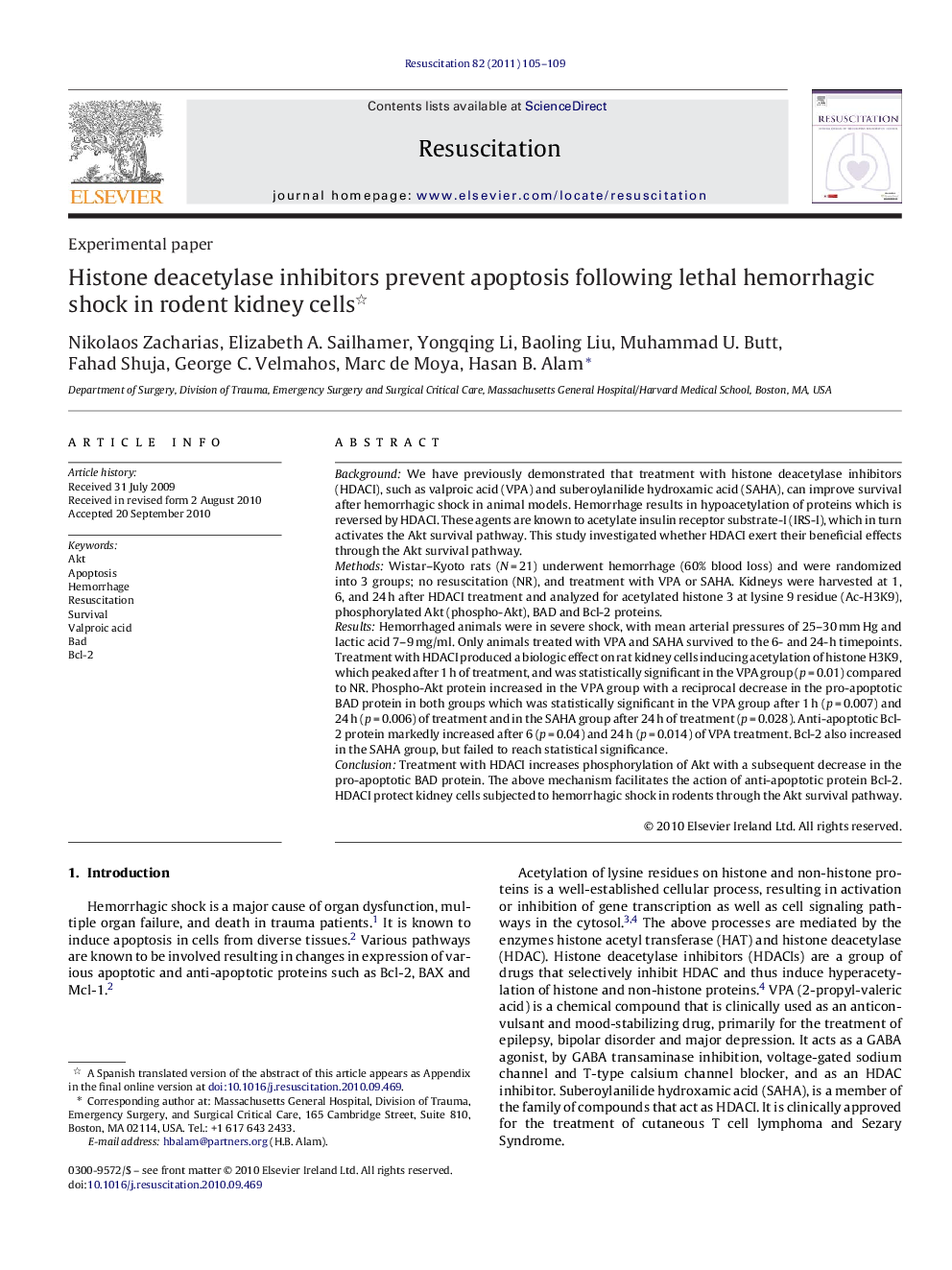| کد مقاله | کد نشریه | سال انتشار | مقاله انگلیسی | نسخه تمام متن |
|---|---|---|---|---|
| 5999199 | 1181471 | 2011 | 5 صفحه PDF | دانلود رایگان |

BackgroundWe have previously demonstrated that treatment with histone deacetylase inhibitors (HDACI), such as valproic acid (VPA) and suberoylanilide hydroxamic acid (SAHA), can improve survival after hemorrhagic shock in animal models. Hemorrhage results in hypoacetylation of proteins which is reversed by HDACI. These agents are known to acetylate insulin receptor substrate-I (IRS-I), which in turn activates the Akt survival pathway. This study investigated whether HDACI exert their beneficial effects through the Akt survival pathway.MethodsWistar-Kyoto rats (N = 21) underwent hemorrhage (60% blood loss) and were randomized into 3 groups; no resuscitation (NR), and treatment with VPA or SAHA. Kidneys were harvested at 1, 6, and 24 h after HDACI treatment and analyzed for acetylated histone 3 at lysine 9 residue (Ac-H3K9), phosphorylated Akt (phospho-Akt), BAD and Bcl-2 proteins.ResultsHemorrhaged animals were in severe shock, with mean arterial pressures of 25-30 mm Hg and lactic acid 7-9 mg/ml. Only animals treated with VPA and SAHA survived to the 6- and 24-h timepoints. Treatment with HDACI produced a biologic effect on rat kidney cells inducing acetylation of histone H3K9, which peaked after 1 h of treatment, and was statistically significant in the VPA group (p = 0.01) compared to NR. Phospho-Akt protein increased in the VPA group with a reciprocal decrease in the pro-apoptotic BAD protein in both groups which was statistically significant in the VPA group after 1 h (p = 0.007) and 24 h (p = 0.006) of treatment and in the SAHA group after 24 h of treatment (p = 0.028). Anti-apoptotic Bcl-2 protein markedly increased after 6 (p = 0.04) and 24 h (p = 0.014) of VPA treatment. Bcl-2 also increased in the SAHA group, but failed to reach statistical significance.ConclusionTreatment with HDACI increases phosphorylation of Akt with a subsequent decrease in the pro-apoptotic BAD protein. The above mechanism facilitates the action of anti-apoptotic protein Bcl-2. HDACI protect kidney cells subjected to hemorrhagic shock in rodents through the Akt survival pathway.
Journal: Resuscitation - Volume 82, Issue 1, January 2011, Pages 105-109